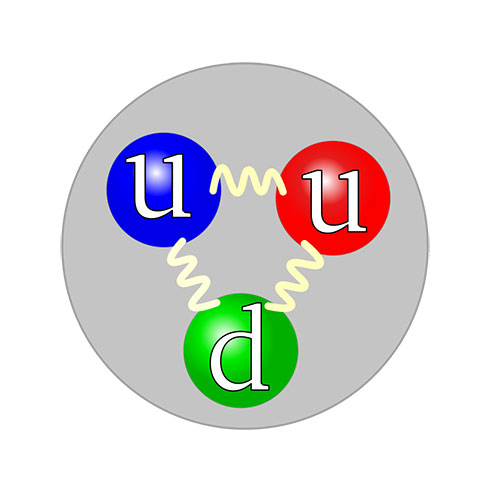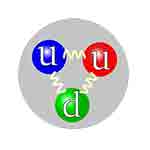
Yes, I’ve taught Physics, but it was only a recent conversation with a Physics teacher after Trinity Sunday that the Baryon model of quarks came up as a model for the Trinity.
Quarks cannot exist alone. [It is possible for a quark and an antiquark to exist very briefly as a meson]. It takes three quarks to form a stable unit, a baryon. Protons and neutrons (the most stable hadrons – composite particles of quarks) are each composed of three quarks of different flavours. These are the primary building blocks of the Universe.
Discussions about The Blessed Trinity quickly tip into modalism and tritheism. Here is a model that might well be added to others doing the rounds, and it just might be a bit more robust than some. What do you think?
If you appreciated this post, consider liking the liturgy facebook page, using the RSS feed, and/or signing up for a not-very-often email, … if you are on Instagram, please follow @liturgy.




Bosco, retired physics professor Geoff Stedman, who lives in Christchurch) may be someone who has both the theological knowledge and the Einstein-ish understanding of physics to advise you on this.
https://www.canterbury.ac.nz/alumni/our-alumni/alumni-authors/books/an-orthodox-understanding-of-the-bible-with-physical-science.html
I don’t have contact details, but perhaps someone else who follows your blog does.
Warm regards
Trevor
Thanks, Trevor! Now to find the time to read it and the space to add it to my book collection… 🙂 Blessings.
And the incarnation as muon production? And the Nicene Creed translated into Feynman diagrams?
So next up the Trinitarian pairing of quarks. The three generations of matter: up-down, charm-strange, top-bottom (or in other circles truth-beauty).
The three quarks of a baryon, and other more complex nuclei, hold together with the strong force. The pairs in each generation transmute between each other under the influence of the weak nuclear force.
Then three flavours of neutrinos: electron, muon, tau. Somebody liked threes.